A food processor can be one of the most frequently used tools in your meal preparation arsenal. That being said, the blade of a food processor plays an important role in determining what you can use the appliance for. But what are the different blade options? For your convenience, we've pulled together a list of the top food processor blades.
There are around a dozen or so types of food processor blades. Here are the 11 most commonly used ones:
- S-shaped blades
- Julienne blades
- Serrated blades
- Slicing blades
- Perforated blades
- Shredding & grating blades
- Dicing blades
- French fry blades
- Whipping disc blades
- Brunoise blades
- Gaufrette blades
As you can see, food processors come with a wide variety of blade options that allow you to create several different meals. When shopping for a new food processor, it's a good idea to determine the main foods that you'll be using the processor for. This will help you determine what type of processor and what type of blade you will need for your tasks. Continue reading to learn more about food processor blades and their applications.
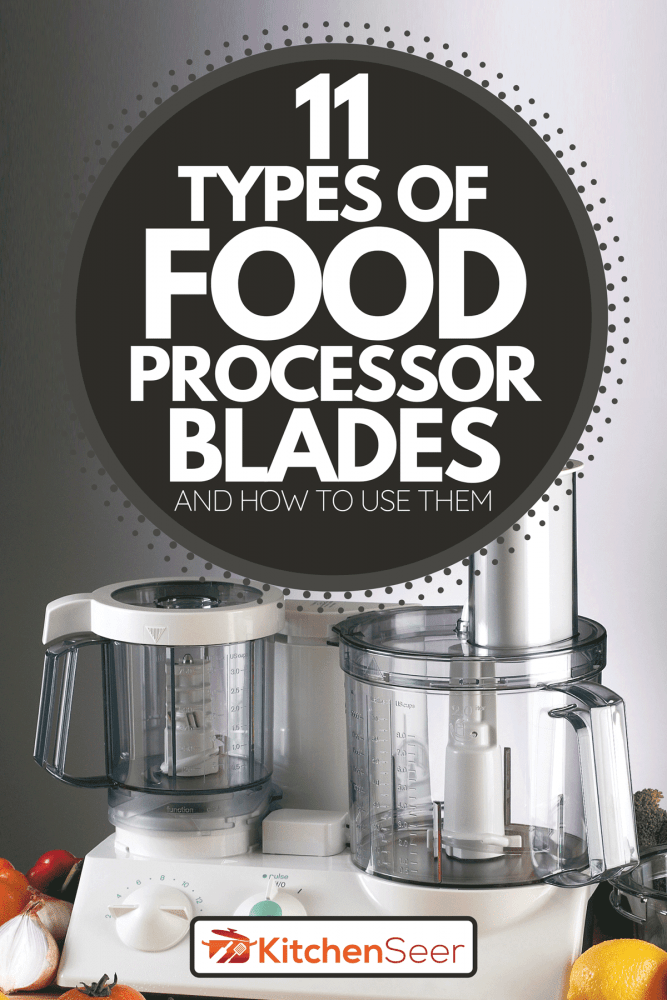
Contents
11 Types Of Food Processor Blades And How To Use Them
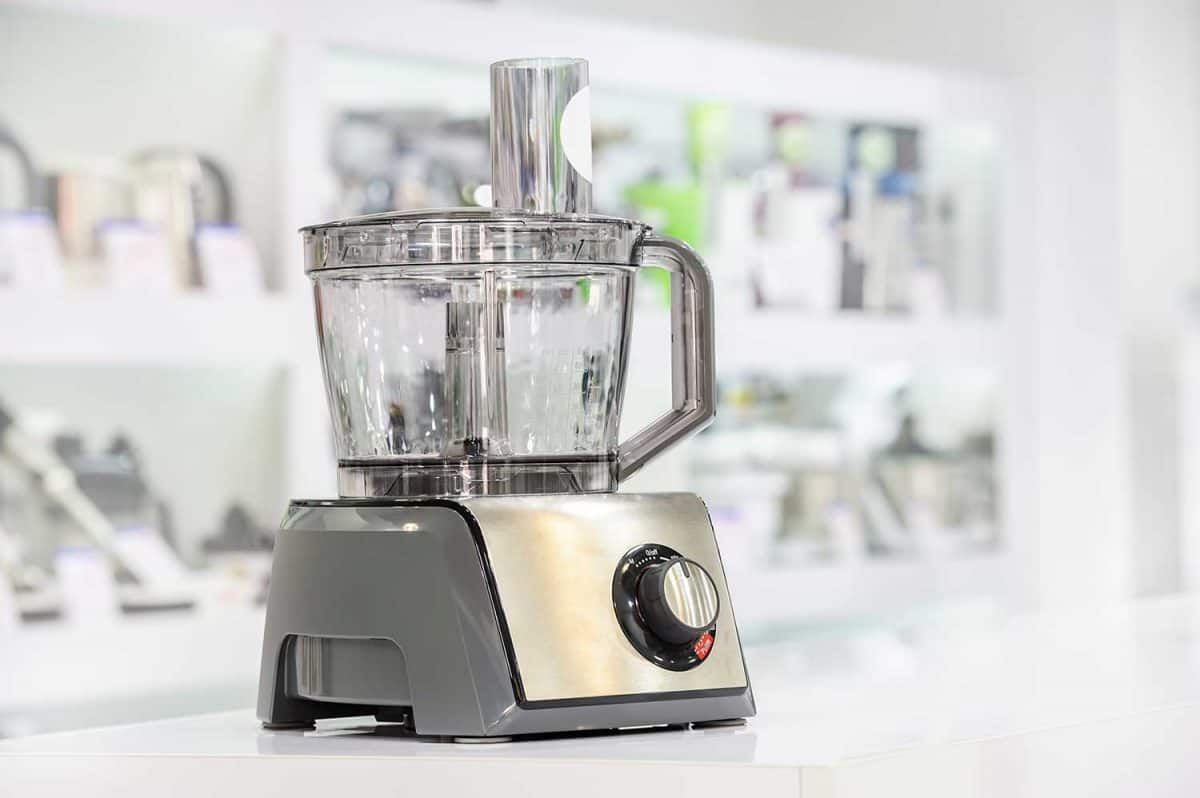
1. S-Shaped Blades
The S-shaped blade is probably the most common blade on a food processor. It contains two curved blades that stick out on separate ends forming, as you would expect, an "S" shape. These blades are the most versatile when it comes to slicing, chopping, grinding, and grating, which explains why they are so commonly used.
You can use them to make nut butter, chopped tomatoes for salsa, and a host of other applications. These blades can also be placed on a pulse setting to chop ingredients evenly if you don't feel like getting out your chef knife to do it manually.
Check out this S-blade on Amazon.
2. Julienne Blades
Julienne blades have the appearance of small snake teeth. Their pointy razor-sharp edges are great for creating straw-like cuts. For example, if you are looking to make homemade hash browns, vegetable sticks, or garnishes, julienne blades are definitely the way to go. Y
ou can also use them for making non-cook squash pasta recipes as well. Their ability to turn zucchini and spaghetti squash into spaghetti-like strands is absolutely unmatched.
Click here to see this julienne blade on Amazon.
3. Serrated Blades
Serrated blades are great for pureeing and chopping vegetables of all sizes. You can also use these blades for dicing up frozen products or meat. If you are looking to create nut butter, these blades will get the job done. You can also use them to create small batches of minced meat to use in soups or broths.
4. Slicing Blades
The name of these blades speaks for itself. They come on a disc and are attached to the top section of the food processor. They are ideal for slicing up vegetables and fruits. When you toss the food down the chute, these blades will quickly slice it into very thin and flat stripes in a matter of seconds. Some advanced food processors have a setting where you can make these slices as thick or as thin as you want.
5. Perforated Blades
Perforated blades work well for creating liquid-based dishes such as sauces, hummus, and pesto. These blades will quickly grind through any vegetable, fruit, and other foods to break them down into a liquified form. If you are looking to create a new cocktail sauce for your shrimp, these are the blades that you want to use.
6. Shredding & Grating Blades
Shredding and grating blades are the ideal choices for cutting any type of cheese. You can use them to cut string cheese, shred soft goat milk cheese, or grate hard cheeses such as parmesan or aged cheddar. They can also be used for grating the zest from citrus fruits such as lemon, lime, orange, and grapefruit. So if you are into creating a homemade essential oil from citrus fruits, here are the blades to use.
Check out this blade on Amazon.
7. Dicing Blades
Prefer not to dice your fruits and vegetables by hand? No problem. You can use a processor to do it for you. These dicing blades typically come in sets of 2 and are capable of creating a variety of dice-style cuts and patterns. If you are looking for precise dices that are even and easy to make, these blades will do the trick.
With them, you can create diced fruits for fruit salads or diced vegetables for stews, soups, and everyday snacks. The options are endless when it comes to these blades.
8. French Fry Blades ("Crimping Blades")
French fries are one of the most common staple foods in American cuisine, but trying to make them at home can seem like such a chore. Potatoes can be hard to cut, and if you are cooking for a large family, it can become very time-consuming. In which case, a processor that has crimping or "french fry" blades can definitely come in handy.
Not only do they allow you to make evenly cut thin or thick french fry shapes, but they also do so in a fraction of the time that it will take you to produce those same cuts by hand. You can also use these blades for slicing up vegetables for Asian dishes or vegetable pasta.
Click here to see this blade on Amazon.
9. Whipping Disc Blades
These types of blades serve to create textures, sauces, and desert bases. If you are baking a pie or a cake and need to whip up a batch of cream, these discs are the way to go. You can also use them to create your own homemade butter, pesto, or sauces. The great thing about these blades is that they can cut your prep time down significantly and can save you from the hand and wrist strain that can come from manually whipping thick liquids and bases.
10. Brunoise Blades
These blades are used to create super small dices which can be applied to pasta, soups, and salads. If you prefer your vegetables or fruits to have the smallest size possible, look no further. You can also use them to create small bouillon cubes for dishes such as chili, rice, or stew.
These blades may not come with your everyday food processor, so you may have to search for processors that specifically include them or that have an attachment that you can purchase separately.
11. Gaufrette Blades ("Waffle Blades")
If you are a potato fan, you will love these food processor blades. They are typically used to create waffle fries, potato chips, and several different types of garnishes and sides. These are another blade option that may not come standard to processors, so you may need to determine if your food processor comes with an attachment for these.
How do you clean a food processor blade?
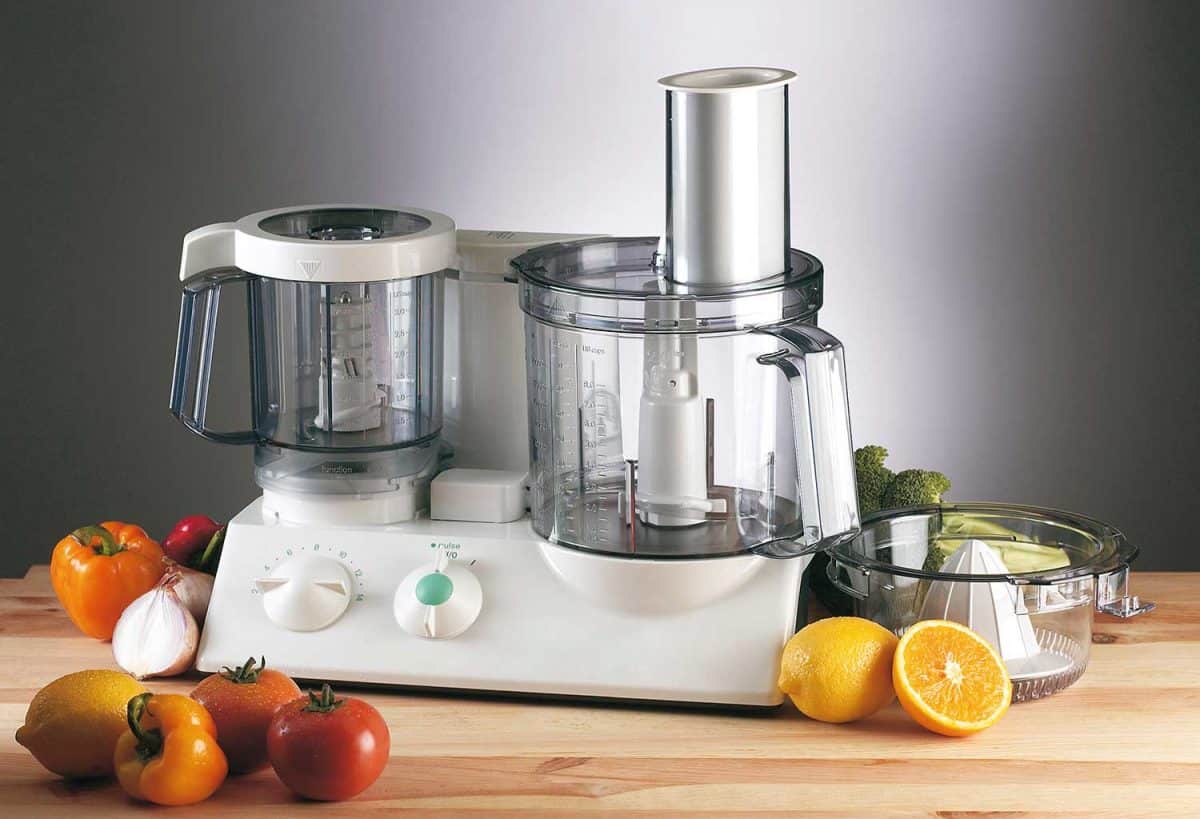
Cleaning your food processor blades is really simple. The most important thing to remember is to never use abrasive cleaners on your discs and blades, as they can cause them to corrode and eventually rust over. To clean the discs and blades, start by rinsing them off immediately after you use them so that the food will not dry on them.
If you cannot reach between the surface of the blades with your scrubbing pad or sponge, use a small bristle brush or a disposable toothbrush to get in between them. You can also use a water bottle brush as well. If you find that your blades have stubborn odors or stains on them, try using a homemade solution to quickly get rid of them. Here's how to do it.
Start by placing the blades in a large bowl. Next, pour an equal ratio of water and vinegar inside the bowl. Then, add 1 tablespoon of baking soda into the mixture and allow the blades to soak in the bowl for about 5-10 minutes. Afterward, clean the blades with warm soapy water and rinse them thoroughly.
Buff them with a clean dry cloth and set them aside to dry. You can take a textured scrubber or regular dish sponge and gently scrub the blades from top to bottom. Be careful when cleaning the blades. It's best to clean the blades with your hands positioned outside of the dishwater so that you can see everything that you're doing.
You can throw the blades in the dishwasher or you can wash them manually. If you plan on tossing the blades in the dishwasher, be sure to use a mild detergent, as harsh detergents can wear down the plastic that surrounds the blades. You also want to avoid placing the dishwasher on a hot water setting, as this can also cause the plastic to melt. Place the blades on the top rack, too.
Can you sharpen a food processor blade?
Yes, you can sharpen the blades on your food processor yourself or you can have them professionally sharpened. If you decide to go the DIY route, make sure to purchase cut-resistant gloves before you sharpen the blades. Food processor blades are short and have a lot of curves, so it's always best to err on the side of caution to avoid injury-- which can occur very easily with these blades.
The quickest way to sharpen your blades is by using a ceramic sharpener. A ceramic blade sharpener the most commonly used sharpener for a food processor and blender blades. You can buy them in most department stores or online for around $40.
When using a ceramic blader sharpener, always do a test run before sharpening the entire blade so that you can quickly determine how long you'll need to spend on each blade. You don't want to ruin the blades by over-sharpening them. Clean your blades after you sharpen them to remove any metal residue or oil.
Click here to see this blade sharpener on Amazon
What is the plastic blade for on a food processor?
Most food processors come with a plastic blade. It is called a "dough blade." This blade has short blunt arms that work to gently turn and pull the dough to knead it. They do not extend to the outside rim of the processor's reservoir, which makes these blades a bit limited in their ability to effectively knead flour.
They can be especially ineffective when only a small amount of dough is being used. Many consumers often find it better to just knead the dough by using their hands.
Wrapping Things Up
We hope that this post has introduced you to the number of blade options available for food processors and the best applications for them. Remember, before buying a new food processor, think about the types of cuts that you'll need to create with the processor.
Before you go, be sure to check out some of our other posts:
How To Properly Dice A Tomato [3 Ways]
How To Cut French Fries With A Food Processor




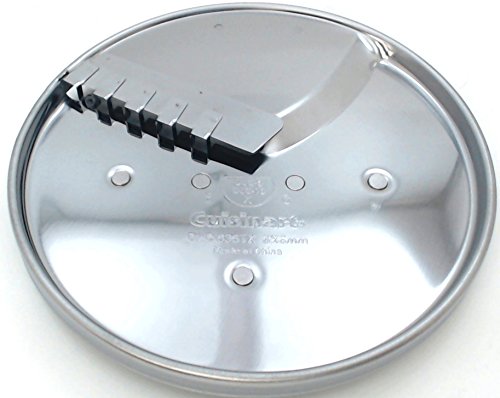
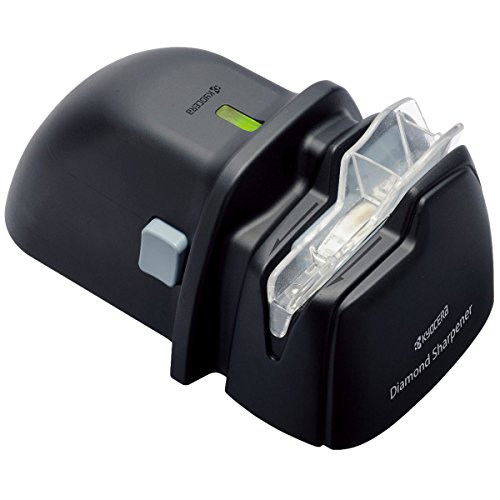

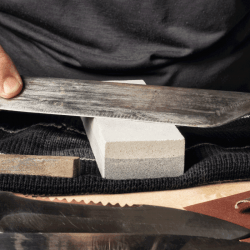
![Food processor blender or coffee grinder blades on wooden table, What Are The Parts Of A Food Processor? [5 Main Sections]](https://kitchenseer.com/wp-content/uploads/2020/10/Food-processor-blender-or-coffee-grinder-blades-on-wooden-table-250x250.jpg)
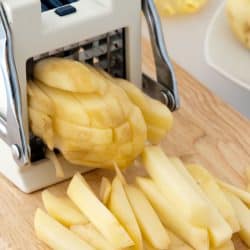
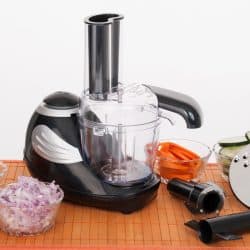
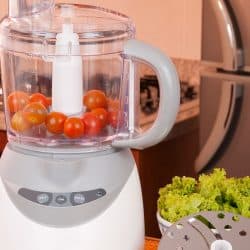
I feel very well informed. Thank you!